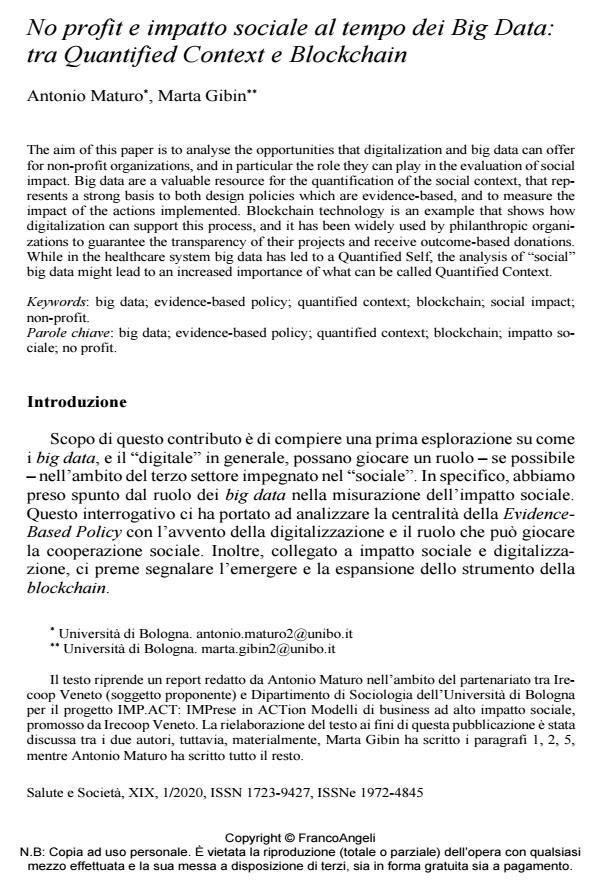No profit e impatto sociale al tempo dei Big Data: tra Quantified Context e Blockchain
Journal title SALUTE E SOCIETÀ
Author/s Antonio Maturo, Marta Gibin
Publishing Year 2020 Issue 2020/1
Language Italian Pages 18 P. 157-174 File size 199 KB
DOI 10.3280/SES2020-001012
DOI is like a bar code for intellectual property: to have more infomation
click here
Below, you can see the article first page
If you want to buy this article in PDF format, you can do it, following the instructions to buy download credits

FrancoAngeli is member of Publishers International Linking Association, Inc (PILA), a not-for-profit association which run the CrossRef service enabling links to and from online scholarly content.
The aim of this paper is to analyse the opportunities that digitalization and big data can offer for non-profit organizations, and in particular the role they can play in the evaluation of social impact. Big data are a valuable resource for the quantification of the social context, that represents a strong basis to both design policies which are evidence-based, and to measure the impact of the actions implemented. Blockchain technology is an example that shows how digitalization can support this process, and it has been widely used by philanthropic organizations to guarantee the transparency of their projects and receive outcome-based donations. While in the healthcare system big data has led to a Quantified Self, the analysis of "social" big data might lead to an increased importance of what can be called Quantified Context.
Keywords: Big data; evidence-based policy; quantified context; blockchain; social impact; non-profit.
- Big Data, Intelligenza Artificiale e Valutazione: cosa accade in Italia Francesco Mazzeo Rinaldi, Ornella Occhipinti, in RIV Rassegna Italiana di Valutazione 85/2024 pp.185
DOI: 10.3280/RIV2023-085010
Antonio Maturo, Marta Gibin, No profit e impatto sociale al tempo dei Big Data: tra Quantified Context e Blockchain in "SALUTE E SOCIETÀ" 1/2020, pp 157-174, DOI: 10.3280/SES2020-001012